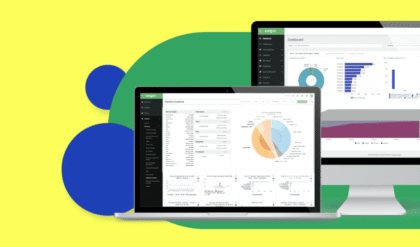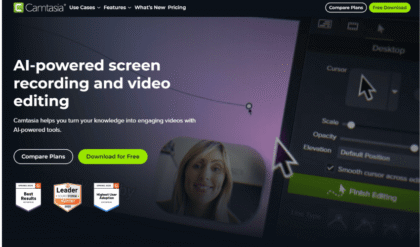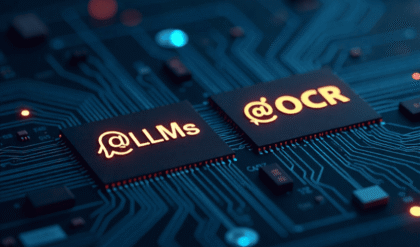Healthcare technology is revolutionizing the way we approach care, especially in the comfort of our own homes, making it more accessible, personalized, and efficient than ever before. Imagine a world where your living room becomes a mini clinic, equipped with smart devices that monitor your health in real-time, alert doctors to potential issues before they escalate, and even assist with daily tasks.

Advancements in AI, wearables, telehealth, and robotics are not just futuristic dreams, they’re already elevating at-home care, empowering patients to live independently while reducing the strain on traditional healthcare systems. This shift isn’t about replacing human touch; it’s about enhancing it, allowing caregivers and medical professionals to focus on what matters most: meaningful, proactive support.
In this article, we’ll dive into the key technologies driving this transformation, explore their real-world impacts, and look ahead to what’s next. Whether you’re caring for an aging loved one or managing your own chronic condition, understanding these innovations can help you navigate a healthier future.
The Rise of AI in At-Home Healthcare
Artificial intelligence is at the heart of modern healthcare technology, acting as a vigilant guard in homes. Systems powered by artificial intelligence (AI) can analyze vast amounts of data collected from daily activities and detect patterns that may give early signs of health risks.
Conversational AI tools integrated with ChatGPT, for example, are reshaping mobile health by providing personalized advice and reminders for medication or symptoms. Think of an older people living alone: an AI assistant can detect subtle changes in speech or movement and suggest a virtual check-in with a doctor before a fall or infection occurs.
One exciting application is predictive analytics, which uses machine learning to anticipate health events. In home care, this means algorithms that review vital signs from connected devices and alert caregivers to potential problems, such as cardiac irregularities or increased blood sugar.
Studies show that AI in remote monitoring can reduce hospital readmissions by 20%, which can save lives and reduce costs. It’s not all high-tech magic, though—simple AI chatbots in apps help with mental health support and suggest strategies for coping during lonely evenings. As AI evolves, it’s becoming more empathetic, using emotion recognition to customize responses, making conversations feel genuinely caring rather than robotic.
Wearable and Remote Patient Monitoring: Your Health on Your Wrist
Gone are the days when monitoring health meant frequent trips to the clinic. Wearable devices, like smartwatches and fitness trackers, are now sophisticated healthcare technology tools that track everything from heart rate to sleep patterns. These gadgets are expected to integrate even deeper with home ecosystems, sending data directly to healthcare providers for real-time insights.
Remote patient monitoring (RPM) takes this a step further. Devices such as blood pressure cuffs or glucose monitors connect via Bluetooth to apps, allowing doctors to oversee chronic conditions like diabetes or hypertension from afar. For example, passive sensors embedded in beds can detect restlessness or breathing issues during sleep, notifying family members instantly.
This tech is particularly game-changing for rural or mobility-limited patients, expanding access and preventing emergencies. A recent trend? AI-enhanced wearables that use blockchain for secure data sharing, ensuring privacy while enabling seamless coordination between doctors and patients. It’s empowering patients to feel more in control, and caregivers get peace of mind knowing help is just a notification away.
Telehealth: Bringing the Doctor to Your Doorstep (Virtually)
Telehealth has exploded in popularity, turning video calls into lifeline consultations. This healthcare technology bridges gaps for those who can’t easily travel, offering everything from routine check-ups to specialist advice right at home. Expect expansions like virtual reality sessions for physical therapy, where patients follow guided exercises with real-time feedback.
Why is telehealth so useful for home care? It reduces costs—reducing travel costs to emergency centers—and increases engagement. Patients with chronic diseases can share wearable data during calls, increasing the accuracy of diagnoses.
Innovations like home ultrasound devices that connect to smartphones allow self-scanning, whose images can be reviewed remotely by providers. There are some hurdles, like ensuring reliable internet, but the benefits are clear: faster intervention and a sense of safety. As one user explained
Robotics and Smart Home Integration: Hands-Free Help
Robotics might sound sci-fi, but they’re already assisting in home care. From companion robots that remind you to take meds to automated vacuums that prevent tripping hazards, these devices promote independence. Advanced models use AI to detect falls via ceiling-mounted sensors, alerting emergency services automatically.
Smart homes amplify this: voice assistants control lights, thermostats, and even dispense pills, while integrated systems monitor environmental factors like air quality for asthma patients. Expect more hybrid setups where robots collaborate with human caregivers, handling repetitive tasks so nurses can focus on emotional support. It’s about dignity—older people stay in familiar surroundings, supported by tech that feels like an extension of family.
Blockchain and Data Security: Safeguarding Your Health Info
With all this data flow, security is paramount. Blockchain in healthcare technology ensures tamper-proof records, making it easier to securely share information between providers. This technology verifies patient data, reduces fraud, and supports personalized care plans without privacy risks.
At home, it empowers personal health records (PHRs), where patients control their data, and draws on data from multiple sources like wearable devices and telehealth logs. This is a fundamental shift that builds trust in digital health and enables innovations like AI-powered insights without compromising sensitive information.
Challenges and the Road Ahead
Of course, no change comes easily. Issues like the digital divide—where low-income or rural people don’t have access—remain, as do concerns about data privacy and tech reliability. Caregivers need to be trained on new tools, and collaboration is needed to integrate these systems with existing healthcare infrastructure.
In the future, experts predict that a mix of AI, IoT, and generative technology will dominate, and home care for older populations will become a common practice. Governments and companies are investing in efficiency, from reimbursement models to workforce training, to make this sustainable. The goal? A future where healthcare technology not only makes home care better but also makes it equitable and human centered.
Wrapping Up
The evolution of healthcare technology is transforming homes into centers of active care where innovation and compassion blend. As these devices become more integrated into daily life, they are not only improving home care but also redefining what it means to age gracefully or manage health challenges. Stay curious, embrace the changes, and prepare for a healthier tomorrow, wherever you are.
FAQs
What is the most promising healthcare technology for at-home care?
AI-integrated remote monitoring stands out, as it predicts health issues and personalizes care, reducing hospital visits significantly.
How does telehealth improve access for old age patients?
It eliminates travel needs, allowing virtual consultations and data sharing from home, which is especially helpful for those with mobility issues.
Are wearables secure for sharing health data?
Yes, with advancements like blockchain, data is encrypted and patient-controlled, minimizing risks while enabling secure sharing.
Can robotics really replace human caregivers?
Not replace but assist—robots handle tasks like reminders and monitoring, freeing humans for emotional and complex care.
What challenges might arise with future at-home healthcare tech?
Key issues include affordability, tech literacy, and integration with traditional systems, but ongoing innovations aim to address these.




